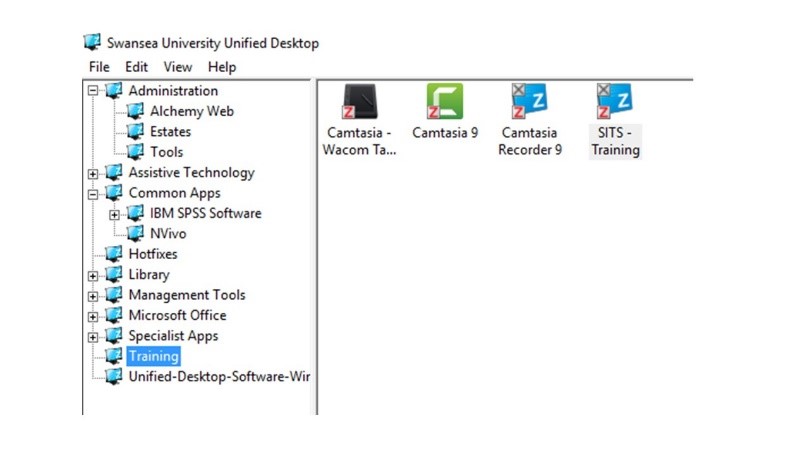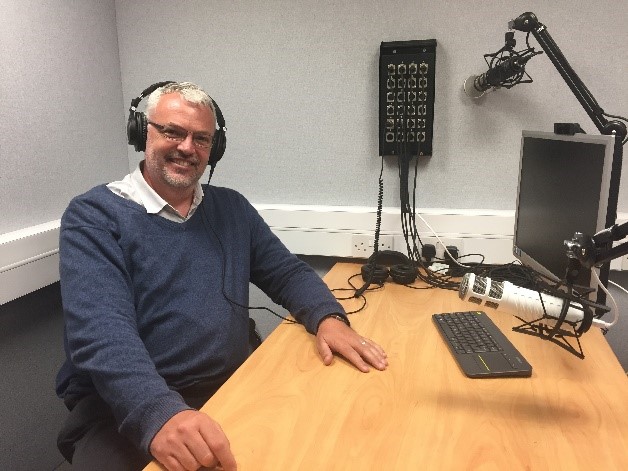
Camtasia is a video and software editing tool that allows you to create, edit and publish your own videos. You can watch an overview here:
Camtasia is one product within the broader TechSmith range. The university has purchased a Camtasia 9 software site license for staff to utilise to create and produce their own videos. Camtasia allows you to screen record or edit imported videos and has been utilised as part of the Blended Learning Pilot Project, with academics using it to create e-lectures or instructional videos. Professional Services staff are also embracing the tool by creating instructional videos to support staff training.
More advanced features include the use of quizzing, with a choice of options to integrate; formats include multiple-choice, free text, fill in the blanks and short answers question types.
Camtasia videos are being used to create blended learning throughout the university. With students accessing the videos or e-lectures ahead of class, they have time to become familiar with key concepts and themes. Videos can be embedded within Blackboard or shared on external platforms, such as YouTube. Students can review the video content at their leisure, to assist learning and preparation for assessments. This software allows you to add captions to videos, supporting students with disabilities and English as a second language learners. Some examples of the use of instructional videos includes how to access Blackboard modules and organisations, use of discussion boards or instructional videos of referencing systems.
Camtasia 9 is available on managed desktop devices for staff. You can access it under the “Training” menu.
When you click on “Camtasia 9” it will install on your machine, this will take a few minutes. Once this is complete, you will be ready to start creating your first Camtasia videos.
If you do not work on a managed desktop device, please speak with your College or School IT department for remote installation, or alternatively raise a Service Desk call.
In addition to producing videos in your own workspace, we also offer a dedicated quiet workspace in the Camtasia Recording Booth. The soundproof booth is fully equipped with all you need to create and publish your videos.
This is situated in Room 19 of the Keir Hardie building on the Singleton Campus. This space is bookable by emailing AVSupport@swansea.ac.uk.
Case Study
The Blended Learning Pilot was an outcome of the work initiated by Paul Holland and Rhian Kerton from the College of Engineering preparing video e-lectures. The Blackboard Blended Learning training module provides examples of how they created and used these videos to complement their teaching on their modules.
For access to the Blackboard module email technologyenhancedlearning@swansea.ac.uk
Through the Blended Learning Pilot a number of academics have been utilising Camtasia to produce their own videos. This is the story of Neal Harman from the College of Science, describing his experience of using video within the module.
Support
The TechSmith website offers a great range of videos to get you started. The videos are quite short, and provide a basic introduction to get you started. They are a great resource to get you started if you are new to video editing and Camtasia
– Record, Edit, Share (4.45) https://www.techsmith.com/tutorial-camtasia-record-edit-share.html
– Transitions and Annotations (6:16) https://www.techsmith.com/tutorial-camtasia-transitions-annotations-behaviors.html
– Animations and Effects (4:29) https://www.techsmith.com/tutorial-camtasia-animations-effects.html
– Editing Audio (3:56) https://www.techsmith.com/tutorial-camtasia-editing-audio.html
– Produce and Share (3:14) https://www.techsmith.com/tutorial-camtasia-produce-share.html
Further Reading
Beheshti, M., Taspolat, A., Kaya, O., and Sapanca, F.H. (2018) “Characteristics of instructional videos”. World Journal on Educational technology: Current Issues vol. 10, no.1, pp. 61 – 69. (Online) Available at https://files.eric.ed.gov/fulltext/EJ1170366.pdf
Boelens, R., de Wever, B. and Voet, M. (2017) “Four key challenges to the design of blended learning: A systematic literature review” Educational Research Review, vol.22, pp. 1-18 (Online). Available at https://www-sciencedirect-com.libezproxy.open.ac.uk/science/article/pii/S1747938X17300258
Di Paolo, T., Wakefield, J.S., Mills, L.A., and Baker, L. (2017) “Lights, Camera, Action: Facilitating the Design and Production of Effective Instructional Videos”. TechTrends vol. 61, no.5, pp. 452 – 460. (Online). Available at
https://link.springer.com/article/10.1007%2Fs11528-017-0206-0
Hajhashemi, K. and Caltabiano, N. (2018) “Blended Learning: Uncovering Challenges in Implementing Online Videos in Higher Education”, in Tang, S. and Cheah, S. (eds) Redesigning Learning for Greater Social Impact. Springer, Singapore, pp.113 – 188.
McBride, C. (2017) “Classroom Flipping and Online Teaching Tool Usage Advice”, International Journal for Infonomics, vol. 10, no. 1, pp. 1264-1272. (Online). Available at
http://infonomics-society.org/wp-content/uploads/iji/published-papers/volume-10-2017/Classroom-Flipping-and-Online-Teaching-Tool-Usage-Advice.pdf
Rana, J., Besche, H., and Cockrill, B. (2017) “Twelve tips for the production of digital chalk-talk videos” Medical Teacher vol. 39, no.6, pp. 653-659. (Online). Available at
https://www.tandfonline.com/doi/full/10.1080/0142159X.2017.1302081




